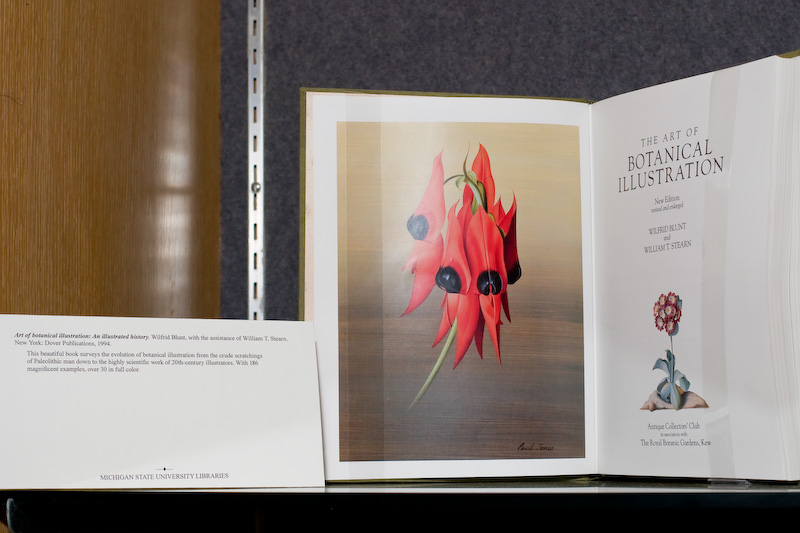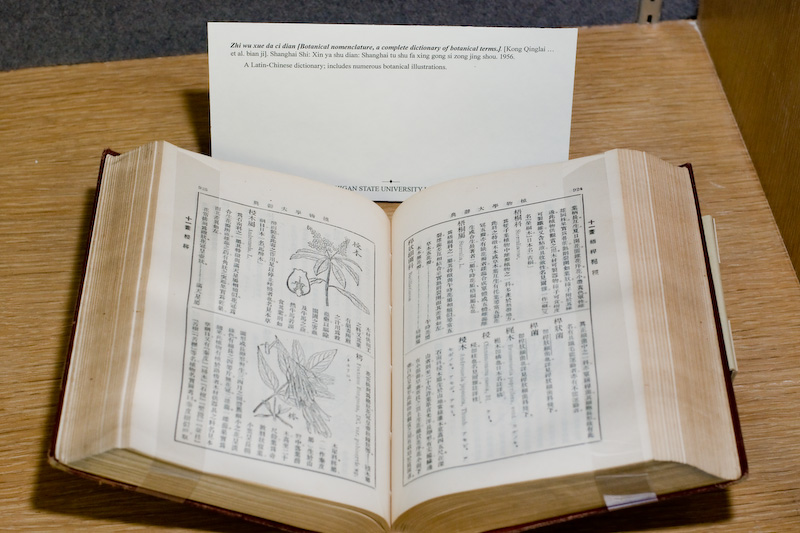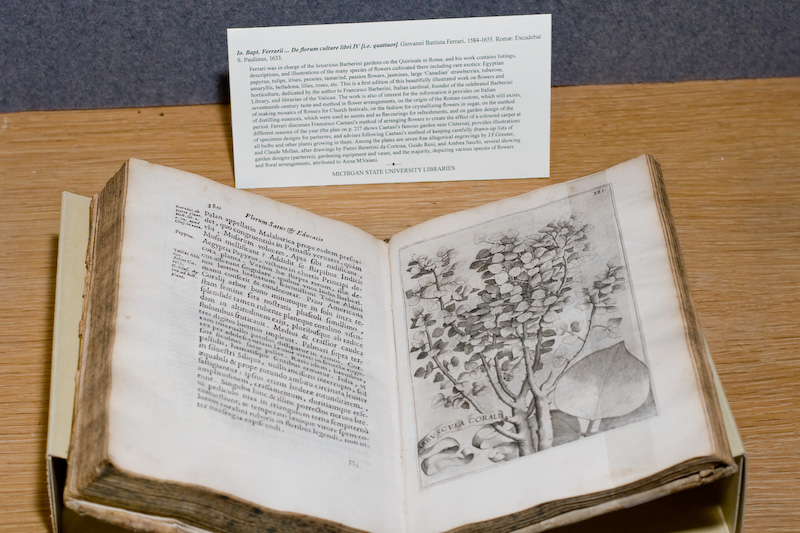How To Illustrate Plants
How-To Works
- How to draw plants: The techniques of botanical illustration. Keith West foreword by Wilfrid Blunt. New York: Watson-Guptill Publications, 1983.
- This beautiful book surveys the evolution of botanical illustration from the crude scratchings of Paleolithic man down to the highly scientific work of 20th-century illustrators. With 186 magnificent examples, over 30 in full color.
- Art of botanical illustration: The classic illustrators and their achievements from 1550 to 1900. Lys de Bray. Bromley: Helm, 1989.
- A how-to guide for drawing plants to include in publications.
Examples of Illustration
- Art of botanical illustration: An illustrated history. Wilfrid Blunt, with the assistance of William T. Stearn. New York: Dover Publications, 1994.
- Keith West was formerly Art Lecturer for the Department of Extension Studies, University of Canterbury, Christchurch, and was Botanical Artist for the Botany Division of the Department of Scientific and Industrial Research in New Zealand for 20 years. This work is a comprehensive guide that discusses equipment, plant handling, details of plant structure, pencil, ink, scraper board, watercolor, gouache and new acrylic techniques. Over 130 illustrations demonstrate the various techniques alongside examples of the work of well-known artists.
- Botanical illustration: Preparation for publication. Noel H. Holmgren & Bobbi Angell. Bronx, N.Y., USA : New York Botanical Garden, 1986.
- The greatest botanical illustrations throughout the history of the genre are presented in this fascinating and beautifully designed survey. Beginning with the ancient Egyptians, plants, flowers and herbs have been the subject of the artist's attention. Author Lys de Bray explains why skilled botanical art is better - and of more use to posterity - than the best photographs.
- The art of plant evolution. W. John Kress and Shirley Sherwood. Richmond: Kew Pub., 2009.
- "Art meets science in this book that aims to give readers a sense of some contemporary scientific discoveries that are changing our understanding of plant relationships. 136 botanical paintings from the Shirley Sherwood Collection, by 84 artists, cover 50 orders of plants in 118 families, and a total of 133 species, providing a sweeping overview of the evolution of plants on earth. The paintings display a sampling of the plant world from fungi to daisies, including algae, mosses, ferns, conifers and flowering plants arranged in the most up to date evolutionary sequence, determined by recent DNA analysis. The text places each artist's observations as displayed in the paintings, in the context of modern plant classification, providing readers with a new understanding of the complex interrelationships between plant species, and enhancing their appreciation of the botanical artist's ability to portray the delicate beauty of nature."
- Source
NHBS Environment Bookstore
- Zhi wu xue da ci dian [Botanical nomenclature, a complete dictionary of botanical terms.]. [Kong Qinglai … et al. bian ji]. Shanghai Shi : Xin ya shu dian : Shanghai tu shu fa xing gong si zong jing shou. 1956.
- A Latin-Chinese dictionary; includes numerous botanical illustrations.
- Io. Bapt. Ferrarii ... De florum culture libri IV [i.e. quattuor]. Giovanni Battista Ferrari, 1584-1655. Romæ : Excudebat S. Paulinus, 1633.
- Ferrari was in charge of the luxurious Barberini gardens on the Quirinale in Rome, and his work contains listings, descriptions, and illustrations of the many species of flowers cultivated there including rare exotics: Egyptian papyrus, tulips, irises, peonies, tamarind, passion flowers, jasmines, large ‘Canadian’ strawberries, tuberose, amaryllis, belladona, lilies, roses, etc. This is a first edition of this beautifully illustrated work on flowers and horticulture, dedicated by the author to Francesco Barberini, Italian cardinal, founder of the celebrated Barberini Library, and librarian of the Vatican. The work is also of interest for the information it provides on Italian seventeenth-century taste and method in flower arrangements, on the origin of the Roman custom, which still exists, of making mosaics of flowers for Church festivals, on the fashion for crystallizing flowers in sugar, on the method of distilling essences, which were used as scents and as flavourings for refreshments, and on garden design of the period. Ferrari discusses Francesco Caetani’s method of arranging flowers to create the effect of a coloured carpet at different seasons of the year (the plan on p. 217 shows Caetani’s famous garden near Cisterna), provides illustrations of specimen designs for parterres, and advises following Caetani’s method of keeping carefully drawn-up lists of all bulbs and other plants growing in them. Among the plates are seven fine allegorical engravings by J.F. Greuter, and Claude Mellan, after drawings by Pietro Berettini da Cortona, Guido Reni, and Andrea Sacchi, several showing garden designs (parterres), gardening equipment and vases, and the majority, depicting various species of flowers and floral arrangements, attributed to Anna M. Vaiani.
More Information
Here is a list of more items that did not make it into the display but are worth mentioning.
- Collins, Minta. Medieval Herbals: The Illustrative Traditions. London: British Library, 2000.
- King, Ronald. Botanical Illustration. London: Ash & Grant, 1978.
- Lack, H. Walter. Garden Eden: Masterpieces of botanical illustration = Ein Garten Eden: Meisterwerke der botanischen Illustration = Un jardin d'Eden : chefs-d'oeuvre de l'illustration botanique. Köln: Taschen, 2001.
- Rix, Martyn. The Art of the Plant World: The Great Botanical Illustrators and Their Work. Woodstock, N.Y.: Overlook Press, 1980.
- Sampson, F. Bruce. Early New Zealand Botanical Art. Auckland: Reed Methuen, 1985.
- Saunders, Gill. Picturing Plants: An Analytical History of Botanical Illustration. Chicago: KWS, 2009.
- Sherwood, Shirley, Stephen A. Harris, and B. E. Juniper. A New Flowering: 1000 Years of Botanical Art. Oxford: Ashmolean Museum, 2005.
- Stearn, William T. Flower Artists of Kew: Botanical Paintings by Contemporary Artists. London: Herbert Press in association with the Royal Botanic Gardens, Kew, 1990.




